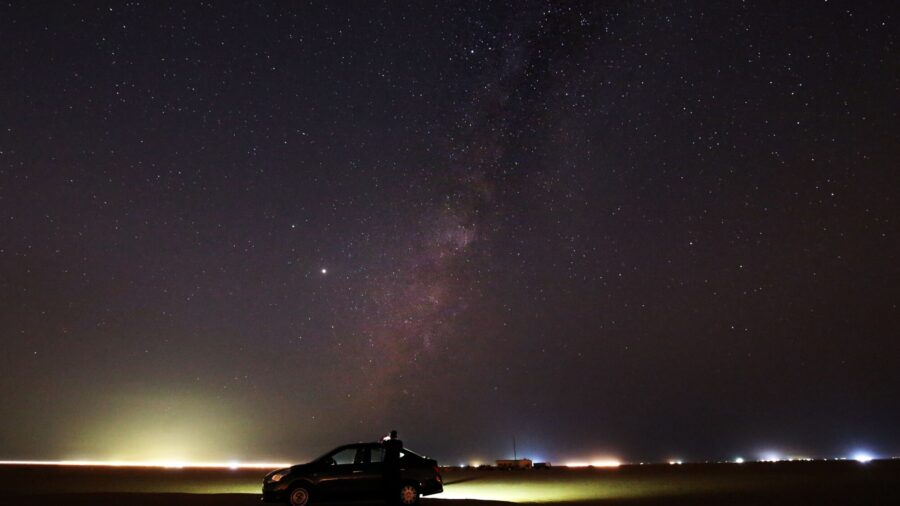Astronomers have discovered a planetary system including six planets and it’s not quite like anything they’ve seen before. The system could challenge the theories scientists have about how planets form and change over time.
Our solar system is just one of many planetary systems, and so far, no two systems are alike. The systems vary in the number and type of planets they contain.
About 200 light-years away from us is the star TOI-178, found in the Sculptor constellation. The research team initially thought there were only two stars orbiting the planet.
A closer look revealed something else entirely.
“Through further observations we realized that there were not two planets orbiting the star at roughly the same distance from it, but rather multiple planets in a very special configuration,” said lead study author Adrien Leleu, a CHEOPS fellow at the University of Bern, Switzerland, in a statement. (CHEOPS stands for the European Space Agency’s CHaracterizing ExOPlanet Satellite.)
The study published Monday in the journal Astronomy & Astrophysics.
Five of the six planets are essentially locked in a rare rhythmic orbit around the stars, creating a resonance. This means that some of the planets are actually aligned every few orbits and that there are discernible patterns as the planets complete their orbits.
This happens around Jupiter in our solar system as three of its moons, Io, Europa and Ganymede, orbit the gas giant. Io is the closest of the three moons. For every four orbits it completes around Jupiter, Europa completes two and Ganymede completes one. This creates a 4:2:1 pattern.

The resonant orbits of the TOI-178 system are more complicated. It’s one of the longest resonant chains found in a planetary system, the researchers said.
The five outer planets of the system follow this pattern: 18:9:6:4:3.
That means for every 18 orbits of the second closest planet to the star, the third planet completes 9.
A chain of resonance can reveal information about how a planetary system forms and evolves and what it was like in the past.
“The orbits in this system are very well ordered, which tells us that this system has evolved quite gently since its birth,” said study coauthor Yann Alibert, an affiliated professor of astrophysics at the University of Bern, in a statement.
Planetary systems can be volatile places in their early days and disruptions caused by the gravitational influence of large planets can disrupt and kick out others. Other times, impacts between planets or other objects can disrupt systems.
This system has been preserved, hence the resonant orbits. However, the densities of the planets are not well ordered, the researchers said.
“It appears there is a planet as dense as the Earth right next to a very fluffy planet with half the density of Neptune, followed by a planet with the density of Neptune. It is not what we are used to,” said study coauthor Nathan Hara, a postdoctoral researcher and CHEOPS fellow at the Université de Genève, in a statement.
The planets in our solar system are arranged with more dense, rocky planets closest to the sun, while the lower density gaseous planets are farther away.
“This contrast between the rhythmic harmony of the orbital motion and the disorderly densities certainly challenges our understanding of the formation and evolution of planetary systems,” Leleu said.
Multiple telescopes were used to study the system, including the CHEOPS satellite and multiple ground-based telescopes at the European Southern Observatory in Chile.
Exoplanets are difficult to observe directly, but the scientists used two methods to observe them. These methods include radial velocity, or observing starlight for telltale wobbles as planets move around a star in orbit, and transiting, or dips in starlight as planets pass in front of stars.
Both techniques revealed that the planets are much closer and in quicker orbits around their star than Earth is to the sun. For example, the closest planet to the star completes a full orbit in a couple of Earth days; the farthest takes about 10 times that.
The planets range in type, including rocky and larger than Earth, known as super-Earths, as well as gaseous planets smaller than those in our solar system, called mini-Neptunes.
While the planets are between one to three times the size of Earth, their masses are 1.5 to 30 times that of Earth.
None of the planets are considered to be in the habitable zone of the star, or the perfect distance from the host star where these planets could support liquid water, or life, on their surfaces.
However, more observations of this system could reveal more planets orbiting the star that are in that zone. Future telescopes will be able to directly image some of these exoplanets and peer into their atmospheres, revealing more of the TOI-178 system’s secrets.


